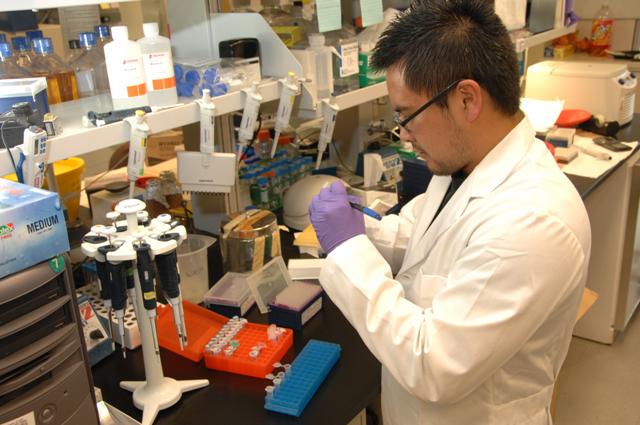As a part-time resident of Washington, D.C., for nearly thirty years, I’ve taken almost every visiting friend and family member to the National Holocaust Museum. It’s not just a stop on the tourist circuit; it’s an essential rite of passage for every human who truly wishes not to repeat a horrific past. Inside those four floors of horror sits a quiet indictment of what happens when a society rationalizes the destruction of human life in the name of progress.
One exhibit documents the Nazi medical experiments: the photographs, the instruments, the testimonies. In one corner, a display shows the “freezing experiments” at Dachau. Men, stripped, shivering, screaming, submerged in vats of ice water while Nazi doctors stood by with stopwatches. The goal? To calculate how long it took for a human body to die of hypothermia. These weren’t rogue acts of violence. They were state-sanctioned scientific procedures, carried out by men in lab coats for whom certain lives no longer counted.
This display and these experiments came to mind today when I read a study that documents how, in Barcelona, another experiment recently unfolded. Quieter and cleaner to be sure, but no less chilling.
Click Like if you are pro-life to like the LifeNews Facebook page!
Scientists at the Institute for Bioengineering of Catalonia (IBEC) filmed live human embryos as they implanted themselves into a synthetic uterine lining. The team created a gel made of collagen and key developmental proteins to mimic the human womb. They placed embryos near the surface and recorded every 20 minutes over 24 hours, capturing how embryos pull and burrow their way into the tissue. The embryos were donated by a local hospital, as if they were nothing more than chattel to be given away.
These embryos weren’t intended for transfer or continued growth. The intent was always for them to be filmed, studied, then discarded. These weren’t “potential lives”; they were human beings at their earliest stage, genetically distinct, self-directed, and already organizing their environment. Their first act, implantation, was stripped of dignity and transformed into a research datapoint.
The footage is stunning. It’s also morally indefensible and repellent.
Watching a nine-day-old embryo burrow into artificial tissue, pulling, pushing, reshaping, feels like witnessing a private moment hijacked by sterile curiosity. Like the victims of Dachau, these babies were reduced to subjects, stripped of their humanity for the sake of scientific advancement. In that lab in Barcelona, the baby’s first act of agency, the drive to implant and grow, was recorded for scientific gain. Then the life behind the footage was erased.
This wasn’t just an ethical failure. It was a betrayal of memory.
The Nazi regime weaponized medicine. At Dachau, they froze prisoners alive. At Ravensbrück, they infected women with gangrene to test antibiotics. In Vienna, at the Am Spiegelgrund clinic, they injected disabled children with lethal doses of morphine. They preserved their brains in jars for further research. These acts weren’t hidden. They were documented meticulously. They were conducted by educated men who believed certain lives were expendable.
We recoil from that history. We vow “Never Again.” We build museums to remember it. And yet here we are, watching human embryos burrow into artificial wombs, knowing full well they will be destroyed. The IBEC applauds the clarity of the footage, calling it innovative.
But let’s be clear: the scientists in Barcelona did not conduct this experiment to save a life or treat a disease. They wanted a video and data. And they now defend their work as “essential.” They say it might help infertile couples or explain why miscarriages occur. Perhaps. But ethics are not disposable. Boundaries exist for a reason. Discovery without limits becomes domination.
You do not solve one tragedy by creating another, and you don’t study implantation by sacrificing the implanted. These embryos were not parts. They were people in the earliest stage of life. And when researchers ignore that fact, they become instruments of cruelty, not healers.
I do not invoke the Holocaust lightly. As an ethnic Jew, I carry that history in my blood. But moral clarity demands honest comparisons. The difference between freezing a prisoner to death and filming an embryo before discarding it is smaller than we’d like to admit. Both actions treat life as disposable and erase the subject for the sake of the study. The charts remain. The footage remains. But the human being, the person, is gone. Forever.
Barcelona’s time-lapse footage captured something extraordinary: the moment a human life tries to take root. But it also revealed something else: their willingness to treat that moment as disposable, to reduce a person’s beginning to a data point, a frame in a film reel, forgetting that science is meant to serve humanity, not to consume it.
We know where that road leads. We built a National museum to remind us. Now we must listen.
The post Scientists Put Human Embryos Into Artificial Wombs and Watch Them Die appeared first on LifeNews.com.
Click this link for the original source of this article.
Author: Raimundo Rojas
This content is courtesy of, and owned and copyrighted by, https://www.lifenews.com and its author. This content is made available by use of the public RSS feed offered by the host site and is used for educational purposes only. If you are the author or represent the host site and would like this content removed now and in the future, please contact USSANews.com using the email address in the Contact page found in the website menu.








